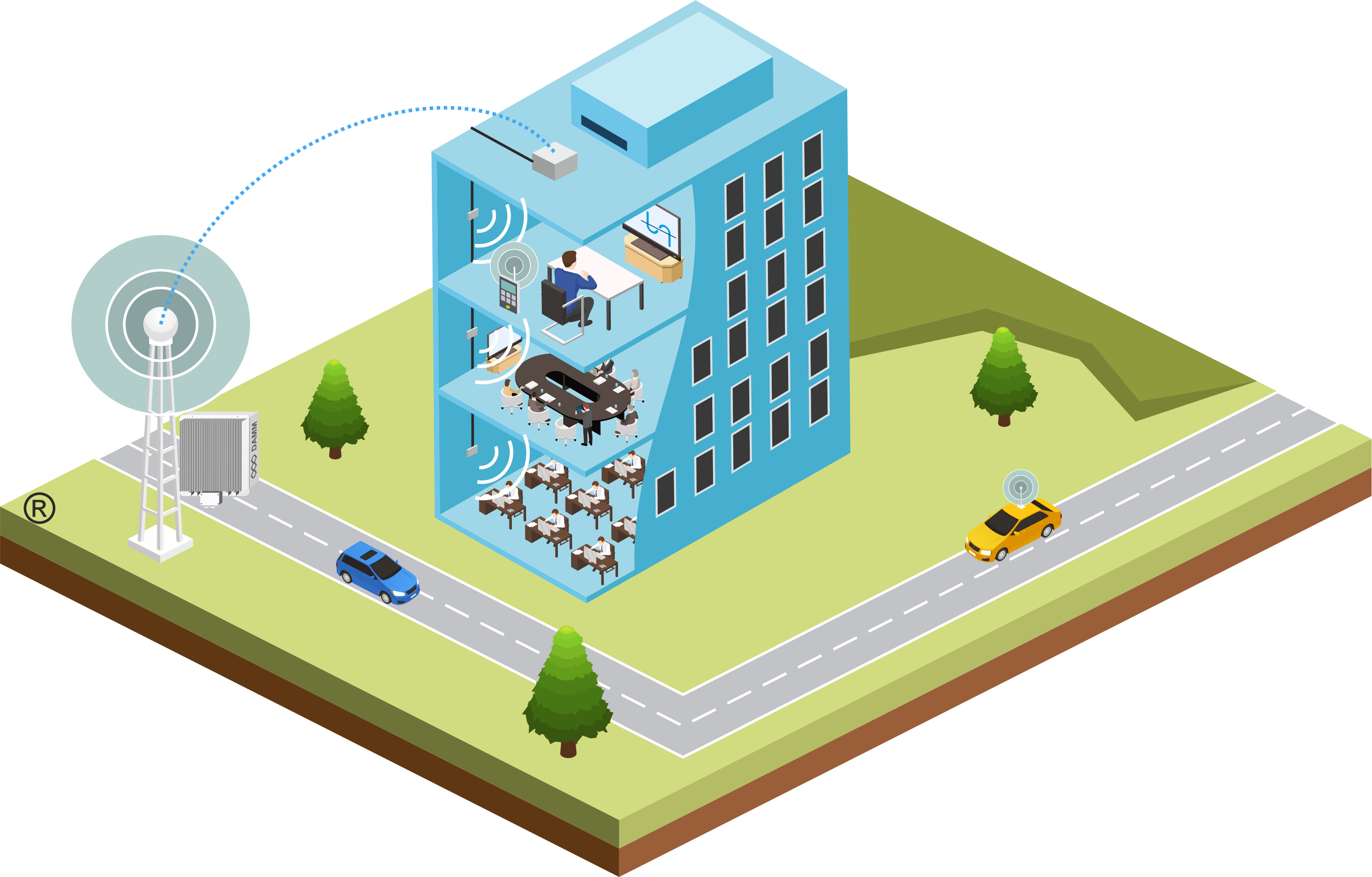While creating a radio communication system, it is often impossible to predict whether radio coverage will be provided inside buildings, shelters, tunnels. Installation of an additional radio basestation can be expensive or impossible if the infrastructure is owned by third parties. In this case, the use of repeaters is justified.
Sometimes, these problems with radio coverage can be associated with the surrounding geography changing during the operation of the radio system, for example, during the construction of buildings and structures. Thus, the implemented solution may lose its economic credibility if the infrastructure equipment is hastily increased to cover some small areas or buildings with small number of subscribers present there.
Another problem that can be encountered at the stage of system design and theoretical calculation of coverage areas of radio networks is the unpredictability of the electromagnetic environment at the stage of project implementation.
Manufacturers refer to repeaters as “cell enhancers” and offer solutions not only for digital networks TETRA or TETRAPOL, but also for DMR networks.
An interesting fact is that there are few Chinese manufacturers on the TETRA repeater market, since the requirements for the linearity of the transceiver path of repeaters are quite difficult to fulfill in a wide temperature range.
Planning sections of TETRA networks using repeaters is not an easy task, and it is more efficient to start this process with an analysis of the actual network coverage areas and signal levels.
Some types of repeaters are able to amplify the signal in a wide frequency band, which allows you to deliver the signal to the area of unsure reception from several base stations, allowing you to provide redundancy of the radio link.
Also, when planning the installation of repeaters, it is necessary to pay attention to the smooth distribution of the radio signal inside the buildings by using a radiating cable, instead of directional antennas.
For TETRA repeaters regulations for electromagnetic compatibility of ETSI EN 303 035 and TS 101789-1 are in force.
TETRA repeaters can be divided into the following categories:
• band selective, low-power;
• channel selective with a number of fixed radio channel;
• hybrid, in which the bandwidth of the radio channel can be adjustable;
• optical fed;
• explosion-proof.
At the same time, repeaters can have both indoor and outdoor.
The second critical parameter when designing the use of repeaters is the propagation of time of the radio signal. Therefore, the installation of a repeater on the physical limits of the radio signal will be useless. For TETRA radio communication systems, this distance is about 53 km. For this reason, the total distance from the TETRA base station, including the repeater, cannot exceed 20-25 km, even if the signal level is sufficient to repeat.
Also the rule is, the narrower the frequency (channel) band is, the greater delay of the amplified signal (from 2 to 36 μs and higher, in one direction). This level of latency does not affect voice quality.
Channel selective repeaters are designed to amplify specific base station narrow frequency channels and are used when it is necessary to avoid signal amplification from unwanted neighboring base stations.
Hybrid models are SDR and can work in both ways: band-selective or channel-selective.
For the hazardous areas it is possible to use special repeaters from BHE with explosion protection category ATEX II 2G EEx d (ia) IIB T4.
Various frequency ranges are available.
Recommended equipment:
– BHE BRTS30 – low power and gain bandpass repeater, +18dBm/70dB;
– BHE BRTL44 – hybrid repeater of high power and +36 dBm / 90 dB gain;
– BHE BRMF55 – expandable master module with support for optical channel multiplexing;
– BRTF15 – repeater with two optical interfaces +36 dBm / 65 dB;
Implemented projects using BHE-MW equipment (Hungary):
– Kazminerals Bozshakol Copper mining Kazakhstan
– Kazminerals Actogay Copper mining Kazakhstan
– Tengizchevroil Refinary Kazakhstan
Berlin Metro Germany
Moscow Metro Russia
– Lakhta Center skyscraper, Russia
– Rembrandt Museum, Netherlands
– Rhätische Bahn, Switzerland
Frankfurt Grand Tower skyscraper, Germany
and many other cases

